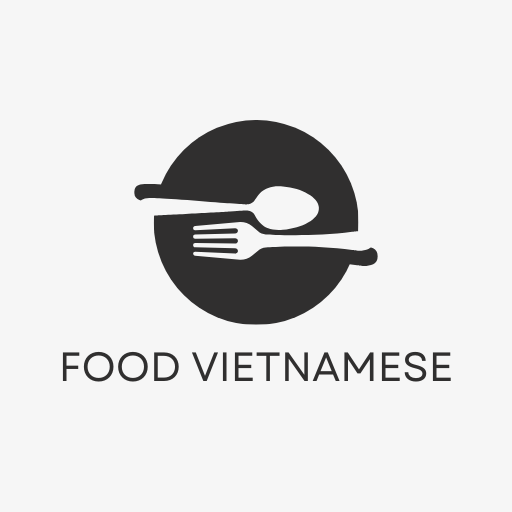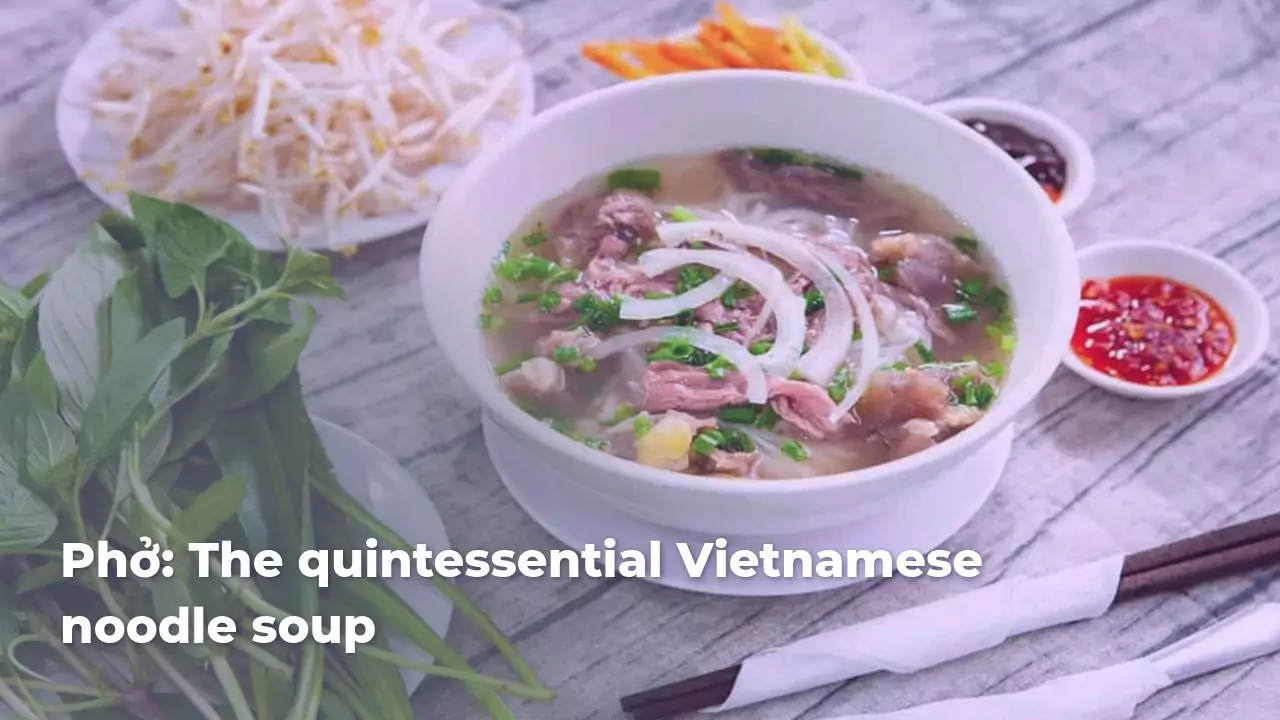Phở is not just a dish; it’s a beloved staple of Vietnamese culture, an aromatic broth, and a symbol of resilience nurtured through decades of history and culinary evolution. At its essence, phở is a delectable noodle soup, characterized by a fragrant broth, tender rice noodles, and a medley of fresh herbs and proteins, most commonly beef or chicken. Enjoyed in bustling street stalls, cozy family kitchens, and upscale restaurants alike, phở serves as both comfort food and a culinary testament to Vietnam’s rich history and vibrant culture. As you delve into the world of phở, you will discover how this dish has transcended borders, capturing hearts and palates around the globe. Its complex flavors, nutritional value, and communal spirit reflect not only Vietnamese culinary traditions but also the adaptability and creativity of its people. Let’s journey through the origin, evolution, and cultural significance of phở, exploring its various ingredients, regional variations, and the experience of consuming this cherished dish.
Origin and History of Phở
The origin of phở is intricately woven into the fabric of Vietnam’s history. Emerging in the early 20th century, this noodle soup finds its roots in Nam Dinh province, where resourceful locals began repurposing leftover beef bones to craft a richly flavored broth a testament to the frugality and ingenuity of Vietnamese cuisine. Initially a simple dish, phở evolved from the humble xáo trâu, a noodle soup made with water buffalo, into a more refined version featuring thinly sliced beef and round rice noodles.

During the late 19th and early 20th centuries, the influence of French colonialism gave rise to a burgeoning beef industry, alongside the growth of street food culture in urban areas like Hanoi. The introduction of roasting and simmering techniques allowed vendors to create richer flavors, paving the way for phở to truly shine. By the 1920s, roaming vendors named gánh phở appeared, bringing the dish to the masses through makeshift stalls. This popularization laid the groundwork for phở’s status as a quintessential breakfast item for many Vietnamese.
Over the course of the mid-20th century, especially during the Vietnam War, phở became a beacon of comfort amidst chaos. Soldiers would frequent makeshift eateries, finding solace in a warm bowl of noodle soup that nourished both body and spirit. Following the war and the subsequent migration of Northern Vietnamese to the South, phở transformed again. Southern chefs began sweetening the broth and introducing a broader array of herbs and garnishes, leading to the distinct regional varieties we know today.
From its humble beginnings to its global presence in contemporary cuisine, phở is a culinary journey that captures the resilience and adaptability of Vietnamese culture, representing the melding of traditions that have withstood the test of time.
Historical Background of Phở
Phở’s transformation through history is as nuanced as the dish itself. Its roots can be traced back to French colonial times when beef became a staple protein in Vietnam, driven by the influence of French culinary practices. The locals embraced this ingredient, creating their unique interpretations with Vietnamese flair. The blending of culinary techniques reflects the dynamic history of Vietnam, where cultures have collided and evolved over centuries.
The broth, a crucial component of phở, represents more than simply a cooking medium; it embodies the essence of Vietnamese cuisine. Historical accounts suggest that using fragrant spices such as star anise and cinnamon drew from both Vietnamese and Chinese culinary traditions, perfecting the balance between savory, sweet, and aromatic flavors that define phở today.
As phở spread across the country, variations began to emerge, reflecting regional tastes and available ingredients. The post-war migration of Vietnamese southerners displaced by conflict introduced southern-style phở to new diners, further enriching its history.
Cultural Significance in Vietnamese Cuisine
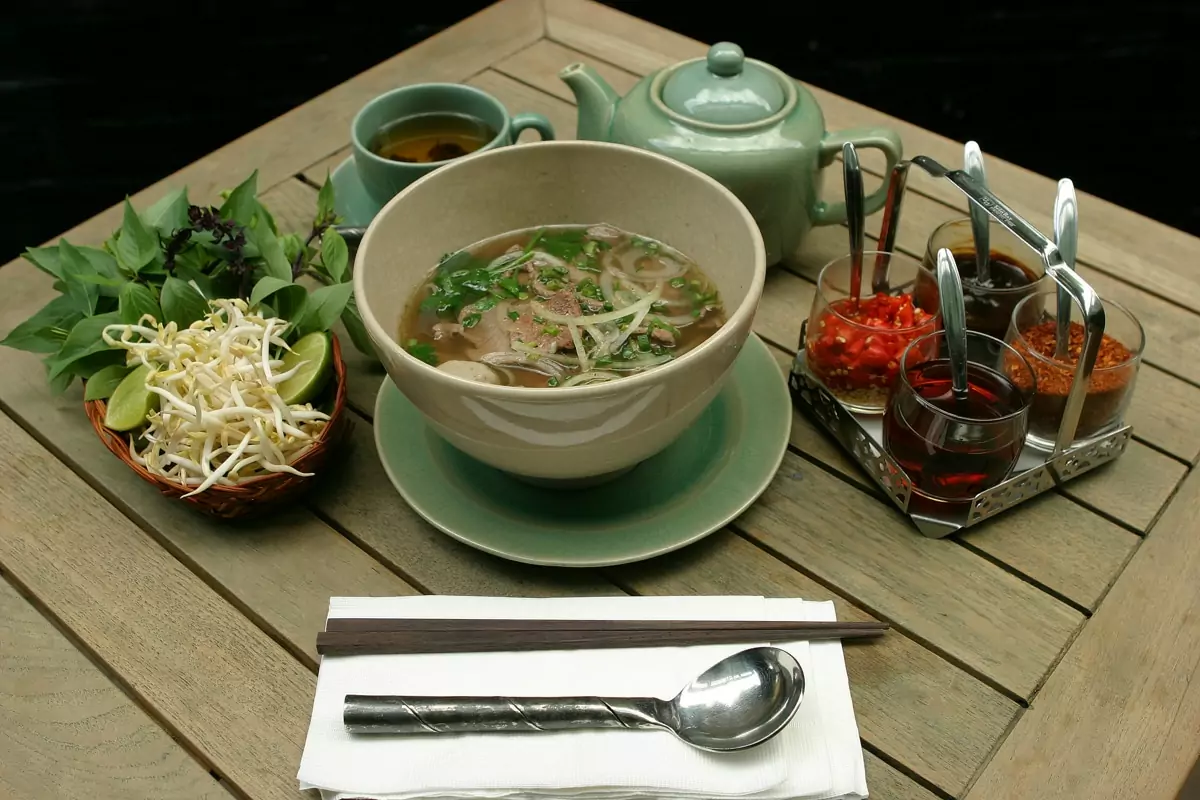
Phở is far more than a mere dish in Vietnam; it symbolizes the country’s culinary identity. It reflects the intricate relationship between food and culture, illustrating values such as family, community, and resilience. While phở is traditionally consumed for breakfast, it’s enjoyed at any time of day, embodying the flexibility of Vietnamese dining habits.
The ritual of enjoying phở transcends the dining experience, fostering connection and community. Families gather around tables, sharing stories and laughter over bowls of steaming broth. Whether enjoyed at street-side stalls or within the comfort of home, phở is a shared experience that strengthens familial and social bonds.
Moreover, phở represents a bridge between the past and present. It carries the weight of history while simultaneously evolving to fit the modern palate. The dish adapts to new influences while remaining steadfastly tied to its traditions. This duality encapsulates the spirit of Vietnamese culture resilient yet adaptable, rooted in history but facing outward toward the future.
Evolution and Variations Across Regions
Phở exhibits remarkable regional diversity, showcasing the rich culinary landscapes found throughout Vietnam. Each region brings its own twist to the dish, influenced by local ingredients, climate, and flavor preferences.
Northern phở, primarily hailing from Hanoi, features a clear and savory broth, paired with flat rice noodles. Garnishing is kept minimal, allowing the natural flavors of the beef and broth to shine through. The focus lies on the purity of the ingredients, with herbs like green onions and cilantro added sparingly.
In contrast, southern phở is known for its sweetness and complex flavor profile. The broth often incorporates rock sugar and additional spices, leading to a sweeter, heartier taste. It boasts an abundance of garnishes such as bean sprouts, lime, and fresh herbs, providing vibrant pops of flavor and texture. This approach to garnishing reflects the wider range of flavor palettes in southern Vietnam.
Central Vietnam, particularly the city of Hue, introduces its own adaptations, incorporating spicier elements and a greater variety of meat. These adaptations showcase the diversity of Vietnamese culinary culture and the vibrant traditions that continue to shape phở.
Ingredients of Phở
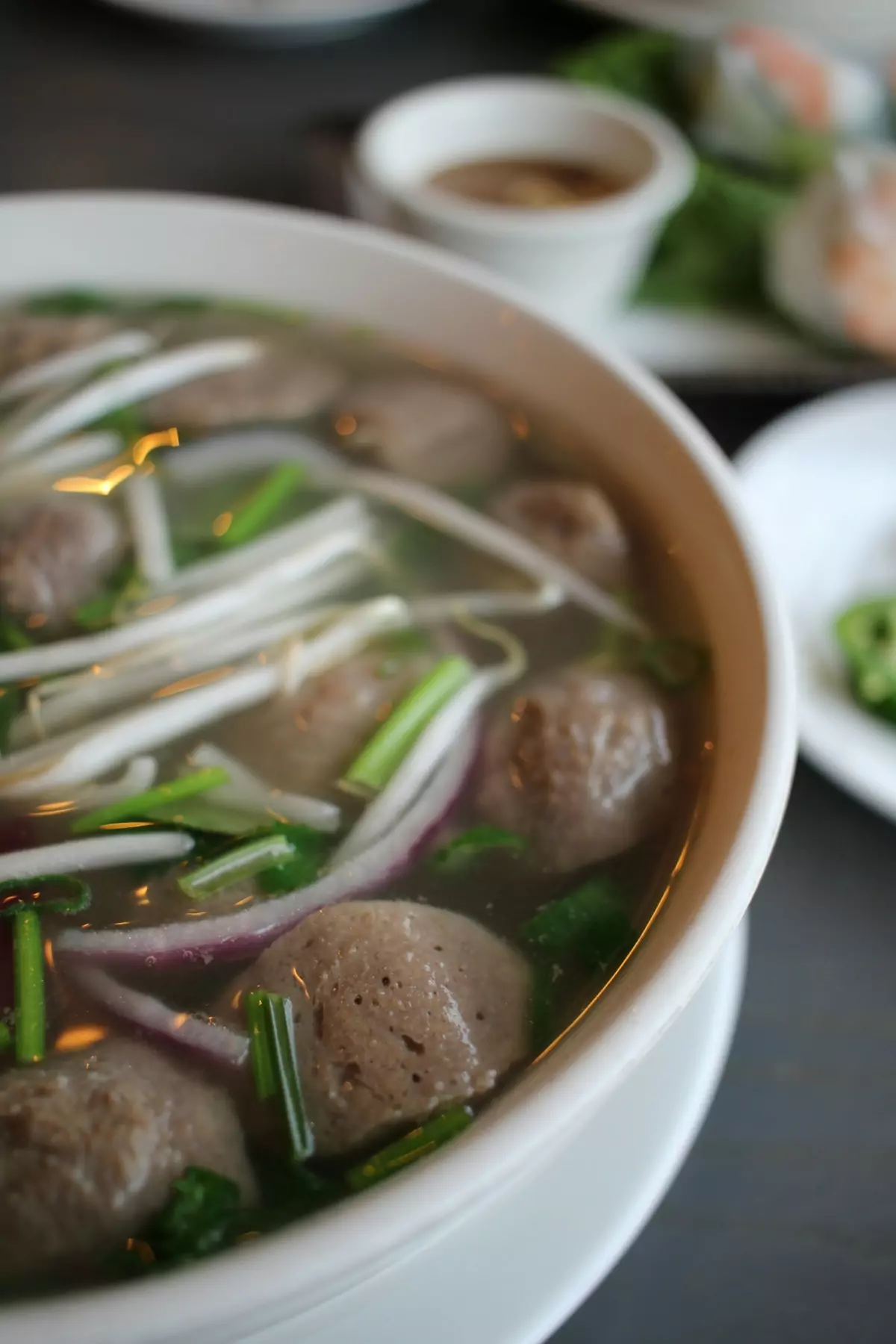
The ingredients of phở play a pivotal role in crafting its complex and harmonious flavor profile. The balance among the various components contributes to the dish’s appeal, making it a beloved choice among food lovers worldwide.
- Broth: The star of the show is undoubtedly the broth, simmered for hours to extract maximum flavor from beef bones, aromatic spices, and fresh ingredients.
- Rice Noodles (Bánh Phở): Flat and wide, these noodles provide a comforting and chewy texture, soaking in the broth’s flavors beautifully.
- Meat: Depending on the regional variation, cuts of beef such as brisket, flank steak, or tendons are used, each contributing its unique flavor and texture.
- Herbs and Garnishes: A selection of fresh herbs, including cilantro, Thai basil, and mint, adds brightness and freshness to the dish.
- Condiments: Accompaniments like lime wedges, sliced chili, and hoisin sauce allow diners to customize their flavor experience.
The interplay among these ingredients creates a bowl of phở that is both hearty and wholesome. It’s a dish where each component shines, coming together in a symphony of flavors that can transport you directly to the bustling streets of Vietnam.
Key Components of the Broth
The broth is arguably the heart of phở, constructed through meticulous preparation and thoughtful ingredient selection. The following are essential components used to create a rich and aromatic broth:
- Beef Bones: The foundation of flavor, utilizing various bones such as marrow and oxtail facilitates a deep and hearty broth.
- Aromatics: Charred onions and ginger impart warmth and depth to the dish, enhancing the broth’s complexity.
- Spices: Key spices such as star anise, cloves, and cinnamon are typically toasted to release their essential oils, adding layers to the broth’s flavor.
- Fish Sauce: Adding umami and seasoning, it is often integrated towards the end of cooking to balance the broth perfectly.
- Rock Sugar: A touch of sweetness in the broth can enhance the overall flavor profile, providing a harmonious balance with savory notes.
Simmering all these ingredients together for hours draws out the flavors, resulting in a clear yet flavorful broth that is both satisfying and comforting. The clarity of the broth is a hallmark of authentic phở, a result of careful preparation and attention to detail.
Types of Meat Used in Phở
Phở typically features a variety of meat cuts, each contributing its unique flavor and texture. Here are some prominent choices:
- Eye Round: Lean yet tender when sliced thinly, eye round is often briefly cooked in the hot broth, maintaining a delicate texture.
- Brisket: Richer in flavor due to its higher fat content, brisket is usually cooked for longer periods, producing mouthwatering tenderness and depth.
- Flank Steak: Known for its flavor, flank steak is generally added raw to the bowl, where it cooks quickly when ladled with the hot broth.
- Tendon and Tripe: For those who enjoy varied textures, these cuts add heartiness and bite to the dish, offering a more authentic phở experience.
The choice of meat not only defines the character of each bowl of phở but also showcases the creativity of the chef, providing diners with options to suit their personal preferences.
Essential Herbs and Garnishes
Fresh herbs and garnishes are essential components of phở, elevating the dish’s aromatic profile and adding layers of flavor. Here’s a look at some of the most common offerings that accompany phở:
- Bean Sprouts: Crunchy and refreshing, they provide a textural contrast and are often added raw or quickly blanched into the soup.
- Lime Wedges: A squeeze of lime juice brightens the dish and enhances its flavors, adding an element of acidity that balances the rich broth.
- Thai Basil: This fragrant herb is characteristic of southern phở, introducing sweet notes that perfectly complement the savory broth.
- Mint: Fresh mint leaves contribute a refreshing quality, often enjoyed by those who prefer a lighter flavor experience.
- Sliced Chili Peppers: For an added kick, fresh chilies are served on the side, allowing diners to customize the spiciness of their bowls.
These garnishes not only personalize each bowl of phở but also enhance the overall experience, bringing a vibrant freshness to the rich dish.
Preparing Phở at Home
Crafting an authentic bowl of phở at home may seem daunting, but with the right approach, anyone can recreate this dish’s comforting essence. Here are simplified steps to help you bring phở to your kitchen.
- Gather Ingredients: Ensure you have your beef bones, rice noodles, and a selection of herbs and seasonings ready.
- Prepare the Broth: Roast beef bones and aromatic vegetables like onion and ginger to develop a rich base flavor. Simmer with water and your choice of spices for several hours until the broth is aromatic and flavorful.
- Cook the Noodles: Prepare the rice noodles according to package instructions, ensuring they maintain a slight chewiness.
- Assemble the Bowl: In bowls, layer the cooked noodles, thinly sliced meat, and pour hot broth over them. Garnish generously with fresh herbs, lime, and whatever condiments you enjoy.
- Serve Hot: Enjoy immediately, allowing the warmth of the broth and the freshness of the herbs to create a harmonious balance.
With each step, take your time to appreciate the aromas and flavors that combine in this quintessential dish, giving you a more profound connection to its cultural heritage.
Steps to Make Authentic Phở Broth
Creating a truly authentic phở broth requires patience and attention to detail. Follow these detailed steps to achieve a rich and flavorful broth:
- Roasting: Preheat your oven to 425°F (220°C) and roast beef bones for about an hour. This process caramelizes the bones, deepening the flavor.
- Char Aromatics: Char onion and ginger over an open flame until they are blackened; this intensifies the flavor.
- Broth Preparation: Place roasted bones in a large stockpot, cover with 10 cups of water, and bring to a boil. Skim off any impurities that rise to the surface.
- Add Spices: Include toasted spices and the charred onion and ginger. Let this simmer for several hours to develop the depth of flavor for your broth.
- Strain and Season: After simmering, strain the broth to remove solids. Season with fish sauce and rock sugar to taste.
By following these steps, you’ll create an aromatic and flavorful phở broth that captures the essence of this cherished Vietnamese dish.
Cooking Techniques for Perfect Rice Noodles
To complement your phở, the cooking of rice noodles is crucial. Here are essential cooking techniques to ensure your noodles are perfect:
- Soaking: Soak medium-thin or medium-sized rice noodles in room temperature water for about 30 minutes to soften them appropriately.
- Cooking: Bring a large pot of water to a rolling boil, then add soaked noodles. Cook them for about 5-7 minutes until they are slightly chewy test them for doneness.
- Rinsing: Once cooked, rinse the noodles under cold water to halt the cooking process and remove excess starch, preventing them from sticking together.
When paired with your phở broth, these perfectly cooked noodles provide the ideal foundation for a delightful bowl of this iconic dish.
Tips for Serving and Garnishing Phở
A well-presented bowl of phở not only excites the palate but also enhances the overall dining experience. Here are some tips for serving and garnishing:
- Layering: Start by placing cooked noodles in the bottom of the bowl, followed by thinly sliced proteins. The heat from the broth will gently cook the meat.
- Garnishing: Artfully arrange fresh herbs, bean sprouts, lime wedges, and sliced chilies around the bowl for visual appeal. Encourage your guests to add them as they please.
- Serving Hot: The broth should be piping hot when poured over the noodles and meat. This ensures optimal flavor absorption and a comforting experience.
By taking care in your presentation, your phở becomes not just a meal but an artwork that reflects the vibrant culinary tradition behind this beloved dish.
Regional Variations of Phở
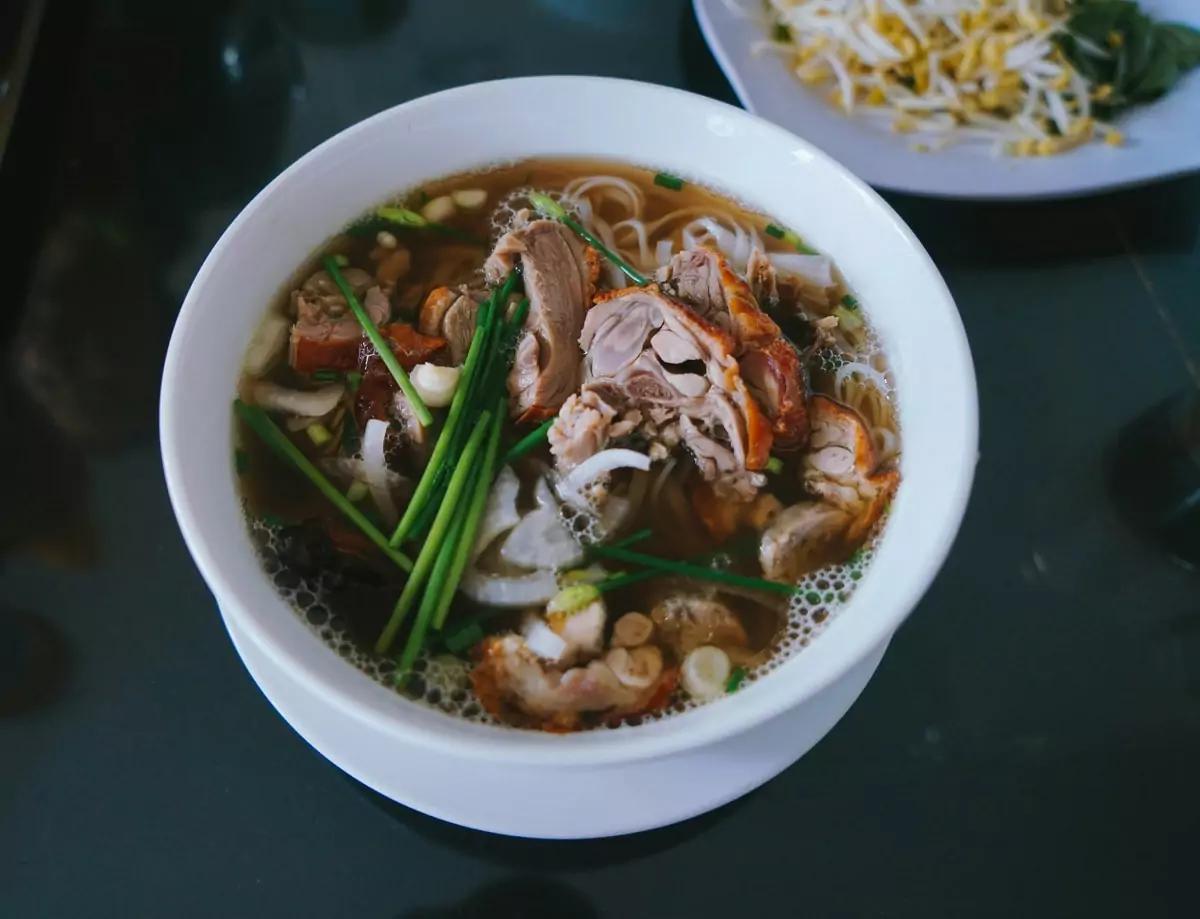
Phở is a representation of Vietnam’s regional diversity, with distinct styles highlighting local ingredients and preferences. Observing these differences allows us to appreciate its rich heritage more deeply.
- Northern Phở (Phở Bắc): Characterized by its clear, savory broth and minimal garnishing. The focus is on the natural flavors of the meat and broth, with simple toppings.
- Southern Phở (Phở Sài Gòn): Sweeter and heartier, featuring a richer broth with numerous garnishes like fresh herbs, bean sprouts, and sauces perfect for those who enjoy robust flavors.
- Central Phở: Unique to cities like Hue, this version emphasizes spiciness and often incorporates a variety of meats, highlighting the region’s bold flavor profiles.
These variations not only showcase local culinary traditions but also the adaptability of phở itself, proving this dish’s ability to evolve while retaining its core identity.
Northern Phở (Phở Bắc) Characteristics
Northern phở, originating from Hanoi, is known for a more straightforward approach, focusing on the clarity of flavors. The broth has limited seasoning to allow the original flavors to shine through. Here are some key characteristics:
- Flavor Profile: A light, savory broth made primarily from simmered beef bones and a few delicate spices, offering an authentic taste experience.
- Noodle Texture: Utilizes wider rice noodles that provide a chewy texture, making them a perfect match for the broth.
- Garnishing: Generally minimal garnishing with fresh green onions and cilantro, emphasizing the broth’s purity. Lime wedges may be provided for an added touch of acidity.
These attributes make Northern phở a beloved staple for locals and a perfect introduction for newcomers to Vietnamese cuisine.
Southern Phở (Phở Sài Gòn) Differences
Southern phở, hailing from Saigon, varies significantly in flavor and presentation. It invites customization and showcases a blend of taste experiences. Key differences include:
- Broth: Darker and more robust, with a touch of sweetness from rock sugar and additional spices that create a complex flavor profile.
- Noodles: Thinner and chewier, allowing for greater interaction with the broth and garnishes.
- Garnishing: Includes a wide variety of fresh herbs and condiments, encouraging diners to personalize their bowls according to their preferences.
The sociable nature of enjoying Southern phở reflects the dynamic and communal approach to food found within Vietnamese culture.
Other Regional Phở Styles and Adaptations
Beyond the most recognized versions, various regional adaptations exist across Vietnam, each reflecting local tastes and preferences. These may include:
- Lao Phở: Influenced by neighboring Laos, often incorporating local spices and a touch of lemongrass for a unique twist.
- Vegetarian Phở: Crafted for those seeking meat-free options, featuring rich vegetable broths and an array of mushrooms and tofu as protein substitutes.
- Seafood Phở: Especially in coastal regions, this variant uses seafood, such as shrimp or fish, paired with traditional garnishes and broth.
These adaptations showcase phở’s versatility, ensuring it remains an inclusive dish that can cater to diverse taste preferences.
Popular Accompaniments and Side Dishes
Phở’s dining experience is further enhanced by a range of popular accompaniments and side dishes that complement its rich flavors. Some noteworthy options include:
- Fresh Spring Rolls (Gỏi Cuốn): These light and refreshing rolls, filled with fresh vegetables and shrimp, serve as a perfect starter to enhance the meal.
- Fried Egg Rolls (Chả Giò): Crispy and satisfying, egg rolls present a delightful texture contrast to the soft noodles and broth.
- Lotus Stem Salad (Gỏi Ngó Sen): A crunchy, tangy salad made with pickled lotus stems that cleanses the palate in between bites of rich phở.
- Nước Mắm (Fish Sauce): A staple condiment, often used for dipping fresh spring rolls, or enhancing the broth’s flavor, making it a versatile addition.
These accompaniments add an exciting variety to the meal, allowing diners to explore different textures and flavors that complement the start of the show phở.
Traditional Beverages to Pair with Phở
In combination with phở, traditional Vietnamese beverages can enhance the overall dining experience. Here are some popular options:
- Vietnamese Iced Coffee (Cà Phê Sữa Đá): Rich and sweet, this coffee pairs well with the savory broth and serves as a delightful pick-me-up during the meal.
- Jasmine Tea: Light and fragrant, tea acts as a palate cleanser, refreshing and complementing the flavors of phở.
- Fresh Fruit Juices: Juices, like lime or pineapple, provide a sweet contrast to the savory elements of the dish.
- Herbal Drinks: Herbal concoctions made from lemongrass or chrysanthemum offer unique flavors and health benefits.
These beverages not only quench one’s thirst but also enrich the overall enjoyment of phở.
Phở in Global Cuisine
Phở is a testimony to the world’s culinary landscape, not merely confined within Vietnam but celebrated globally. This beloved noodle soup has transcended national borders, earning recognition for its rich flavors and cultural significance.
- International Popularity: As the Vietnamese diaspora spread around the world, they introduced phở to international audiences. Cities like Los Angeles, Paris, and Sydney began hosting numerous Vietnamese restaurants, offering authentic phở experiences for locals.
- Adaptations: While traditional recipes remain close to their origins, various adaptations have emerged internationally, reflecting regional tastes and ingredient availability. For instance, some establishments serve vegetarian phở or seafood versions, catering to diverse dietary preferences.
- Culinary Icon: Phở has emerged as a cultural symbol, frequently featured in media, cooking shows, and culinary events, further solidifying its place in the global food landscape.
- Practical Convenience: The rise of instant phở options has made this iconic dish accessible for those seeking a quick, satisfying meal without sacrificing flavor.
Phở’s presence within foreign culinary frameworks reflects its versatility and continued appeal in a multitude of settings, from street vendors to fine dining experiences.
International Popularity and Adaptations
As phở gained notoriety around the world, its international adaptations highlighted its ability to resonate with diverse audiences. People have embraced the dish through various interpretations, showcasing its global allure:
- Fusion Dishes: Creative compositions like phở tacos or phở burgers combine Western flavors and cooking techniques, allowing phở to appeal to local food enthusiasts.
- Cultural Celebrations: Festivals celebrating Vietnamese cuisine often feature phở as a centerpiece, allowing people to explore its rich traditions and flavors in communal settings.
- Health Trends: The nourishing qualities of phở have garnered attention amidst health-conscious movements, leading operations to emphasize its wholesome ingredients and balanced nutrition.
- Cooking Competitions: Phở also finds a place in culinary competitions where chefs demonstrate their skills in crafting authentic broths and innovative presentations.
These adaptations not only signify phở’s enduring popularity but also celebrate the beauty of culinary evolution and the willingness of food to connect people from varying backgrounds.
Phở’s Influence on Fusion Cuisine
Phở’s versatility has led chefs worldwide to embrace and incorporate its elements into new culinary concepts. From high-end gastronomy to casual dining, its influence is seen in various fusion dishes that reinvent its character.
- Innovative Combinations: Chefs blend traditional phở elements with local ingredients to craft unique dishes, such as phở-inspired risottos or spring rolls filled with Thai flavors.
- Culinary Crossovers: Phở brings Vietnamese influence to mainstream dining, inspiring menus in diverse restaurants that cater to adventurous eaters.
- Cultural Dialogues: The combination of traditional phở techniques with ingredients from various cuisines fosters cultural exchange and allows chefs to explore creative culinary narratives.
- Accessibility: Instant phở offerings allow home cooks to experiment with fusion recipes without compromising authenticity, enabling culinary creativity in familiar formats.
Phở illustrates how a traditional dish can evolve and influence culinary innovation while celebrating its cultural roots.
Available Instant Phở Options
The global surge in the popularity of instant phở options has made this iconic dish accessible to countless individuals, requiring minimal preparation while still offering robust flavors. Some notable instant phở products include:
- Pre-Packaged Bowls: These come with noodles, broth, and seasonings in a convenient bowl format. A quick and easy meal, often requiring only hot water.
- Instant Rice Noodle Packs: Noodles are pre-cooked and packaged with flavorings. This option allows for customization by adding fresh herbs and proteins.
- Instant Broth Packets: Portable seasoning packets mimic the rich flavors of traditional phở broth. Users can mix them with hot water and cooked noodles for a quick fix.
- Specialized Vegan and Gluten-Free Options: Recognizing dietary trends, some brands cater specifically to vegan or gluten-free consumers, ensuring phở remains an inclusive dish for everyone.
These accessible options help introduce phở to new audiences while maintaining a sense of authenticity in flavors.
The Experience of Eating Phở
The experience of eating phở goes beyond mere sustenance; it embodies a cultural ritual that highlights Vietnamese culinary practices and the communal spirit of dining.
- Community Atmosphere: Many diners enjoy phở in bustling street-side stalls or family-owned restaurants, where the energy of the surroundings amplifies the dining experience a shared love for food.
- Sensory Journey: As the aromatic broth wafts around, it creates anticipation for the meal to come. The vibrant colors of herbs and spices draw the eye, while the warmth of the soup creates a comforting embrace.
- Unique Rituals: Each diner becomes part of the experience, customizing their bowls with fresh herbs, lime, and chili, allowing personal expressions to shine through.
- Historical Significance: The act of gathering around a bowl of phở connects diners to a long-standing tradition that has witnessed Vietnam’s resilience and adaptability over the years.
Eating phở becomes a celebration of life’s simple joys, enshrining cultural heritage in every flavorful spoonful.
Street Food Culture Surrounding Phở
Phở thrives within the vibrant realm of Vietnam’s street food culture, offering an immersive experience that speaks to the essence of culinary tradition.
- Accessibility: Street vendors serving phở can be found at every corner, making it highly accessible to locals and tourists alike. The affordability ensures that virtually anyone can enjoy this iconic dish.
- Social Interaction: Dining at phở stalls involves interaction with both vendors and fellow diners, fostering a sense of community and connection throughout the meal.
- Artistry in Preparation: Watching expert vendors boil broth and slice ingredients serves as a living demonstration of culinary skill. Patrons often admire the artistry and effort that goes into each bowl.
- Culinary Tradition: Street food culture serves as a living testament to Vietnam’s culinary heritage. The passing down of recipes and techniques highlights the importance of tradition in gastronomy.
The street food culture surrounding phở adds an element of excitement and authenticity, solidifying its role as one of Vietnam’s treasured dishes.
Regional Eating Habits and Customs
Phở is enjoyed in various settings that showcase regional habits and customs, reflecting the diverse ways this dish is approached across Vietnam.
- Customary Timing: While traditionally consumed at breakfast, phở seamlessly integrates into any mealtime, illustrating its versatility as a beloved comfort food.
- Dining Etiquette: Using chopsticks to maneuver the noodles while employing spoons for broth is common. Enjoying phở often involves slurping, seen as a sign of appreciation for the dish.
- Regional Variations: The way phở is prepared and served may vary; for instance, Northern phở is simpler while Southern variants embrace a more elaborate approach with garnishes.
- Cultural Celebrations: Special occasions and family gatherings often include phở as a cherished dish, reinforcing its significance as part of Vietnamese culinary customs.
These regional customs add layers to the consumption of phở, enriching the experience beyond just the act of eating.
Phở in Contemporary Food Culture
In contemporary food culture, phở occupies a cherished space that bridges tradition and innovation.
- Global Reverence: As an icon of Vietnamese cuisine, phở has garnered attention in international culinary events, further legitimizing its place in global gastronomy.
- Culinary Innovation: Chefs continue to push boundaries by integrating phở elements into modern recipes, elevating its status while attracting diverse audiences.
- Social Media Influence: The rise of food photography on social media has propelled dishes like phở into the limelight, creating a buzz around its visual appeal and culinary significance.
- Cultural Relay: Phở remains an emblematic dish representing Vietnam’s culinary identity, serving as a gateway for food enthusiasts to explore traditional Vietnamese flavors and practices.
Phở serves as a bridge connecting various culinary landscapes, ensuring that its fundamental essence is preserved while adapting to fit modern trends.
Phở epitomizes the heart and soul of Vietnamese cuisine, encapsulating the resilience, adaptability, and complexity of the nation’s food culture. From its humble beginnings in Northern Vietnam to its global adaptations, phở reflects a rich history that resonates across borders and generations. It is more than just a noodle soup; it is a sensory journey that connects diners to the essence of Vietnam, bridging the past with the present through its flavors, textures, and communal spirit.
The numerous variations of phở across different regions the minimalistic Northern style, the robust Southern interpretation, and various adaptations around the world showcase its versatility as a dish that caters to individual tastes while honoring its roots. Each bowl tells a story of cultural identity, culinary artistry, and the shared joy of gathering around food.
As phở continues to thrive in the global culinary landscape, its enduring popularity reaffirms its place not just as a food item but as a cultural ambassador for Vietnam. By inviting diners to explore its flavors and embrace its history, phở offers a profoundly enriching experience a deliciously complex reminder of the beauty found within tradition and change in food culture. Whether enjoyed at street stalls or fine dining restaurants, phở remains an essential part of Vietnam’s cultural heritage, captivating the hearts and taste buds of the world.
